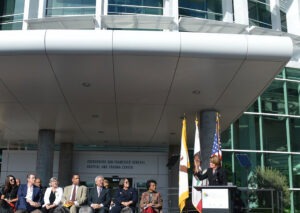
Last week, NPQ extensively covered the stories of the stakeholder revolt at Sweet Briar College and the response of the general public to the now-partially-amended Religious Freedom Restoration Act in Indiana. In both cases, a governing body made a decision that was unacceptable to other stakeholders, who are at once responsible in part for support of the institution and who expect that that relationship is a two-way street. They expect their interests (in terms of self-interest and shared cause and values) to be considered in a reasonable way, and if they are not, they will take action. These cases only add to the cases of stakeholder revolt NPQ has been covering, which also include the likes of Susan G. Komen (for the Cure) and Market Basket, a for-profit grocery chain.
Sign up for our free newsletters
Subscribe to NPQ's newsletters to have our top stories delivered directly to your inbox.
By signing up, you agree to our privacy policy and terms of use, and to receive messages from NPQ and our partners.
That action is, of course, aided by a digital environment that allows for easy communication between stakeholder groups, which, as in Sweet Briar’s case, might include alumni, faculty, donors, local government and community members. In such an environment, I would argue that the role of the board changes. It becomes less of a vaguely representative body and more a body that is responsible for listening with acute ears to their stakeholders and managing with the information that flows from that process. This assumes that boards must become less insular and more culturally attuned so that flatfooted missteps are not made in the name of their supporters. This does not, of course, immunize an organization against making what may be unpopular decisions, but it provides ballast for a balanced view of those decisions among stakeholders. The ballast is created of trust, and that requires communications that reflect the shared ethic of the institution.
One might imagine this extra load of accountability might become onerous, or alternately that it might result in the dumbing down of an institution to its lowest common denominator. If the governed were whimsical and easily led by the loudest or most strident voices, or if trust is already eroded, such things might indeed happen, but the opposite could also happen if new practices of transparency, engagement, and communication are embraced.
In short, denial of our new environment is no protection for the wise organization. Engagement around an organization can be a tool if used; if not, then it can be a scourge, and it is the job of governance to enter this new era, listening differently to stakeholders and communicating the organizations’ governance considerations early and often, wherever possible.












